Protect your harvest in style with these 20 vegetable garden fence ideas. From classic wooden pickets to modern metal mesh, the right fence keeps pests out while adding charm to your garden. Choose durable materials like cedar or galvanized steel for longevity, or repurpose pallets and reclaimed wood for a budget-friendly, eco-conscious option. Incorporate decorative touches such as climbing plants, painted panels, or artistic latticework to blend functionality with beauty. Whether you need a low barrier for rabbits or a tall enclosure for deer, these designs help safeguard your vegetables while enhancing the overall look of your outdoor space.
1. Classic Picket Fence
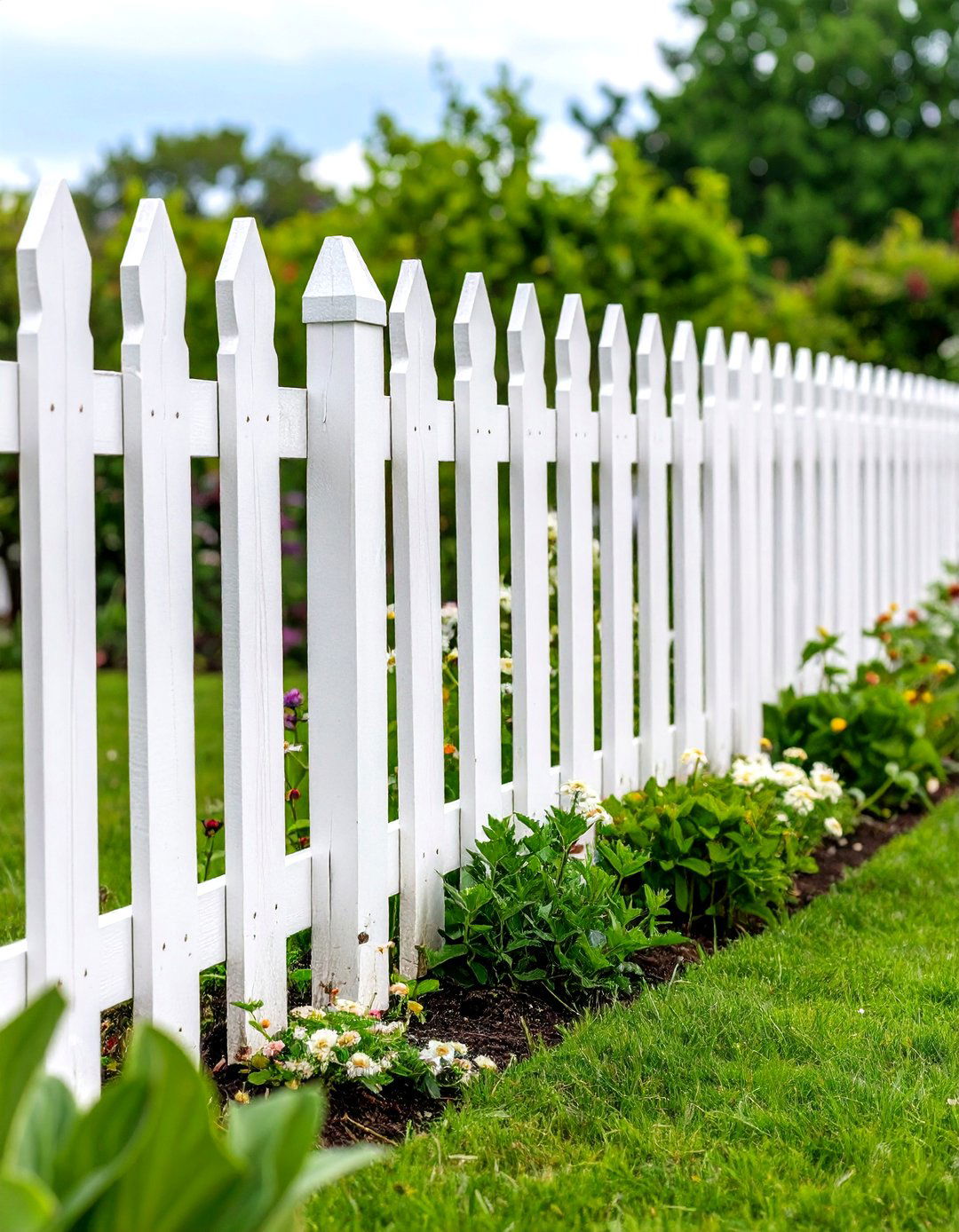
A picket fence remains a timeless choice for vegetable gardens, combining charm with practicality. Typically made of wood such as cedar or pine, picket fences feature evenly spaced vertical boards—known as pickets—attached to horizontal rails. These fences stand about 3–4 feet tall, providing enough height to deter rabbits and small critters while maintaining an open, friendly aesthetic that complements cottage-style gardens. Wood treatments or paints extend longevity against moisture and pests. Installation involves setting sturdy posts in concrete footings, ensuring straight lines and level rails. With regular maintenance—such as repainting and replacing damaged pickets—a wooden picket fence can last decades and frame your garden in classic style.
2. DIY Pallet Fence

Building a fence from reclaimed pallets is an eco-friendly, budget-friendly solution for gardeners on a tight budget. Pallet fences can be assembled by standing pallets upright and securing them side by side between fence posts, creating an instant privacy barrier or a backdrop for climbing beans and cucumbers. Pallet planks can be removed and reconfigured into decorative patterns—such as chevrons or color-blocked sections—for added visual interest. Because pallets are often available for free, this approach minimizes material costs, though wood quality and durability vary. Applying a protective sealant extends the fence’s life, while occasional reinforcement and replacement of damaged boards keep the structure solid.
3. Metal Mesh Fence
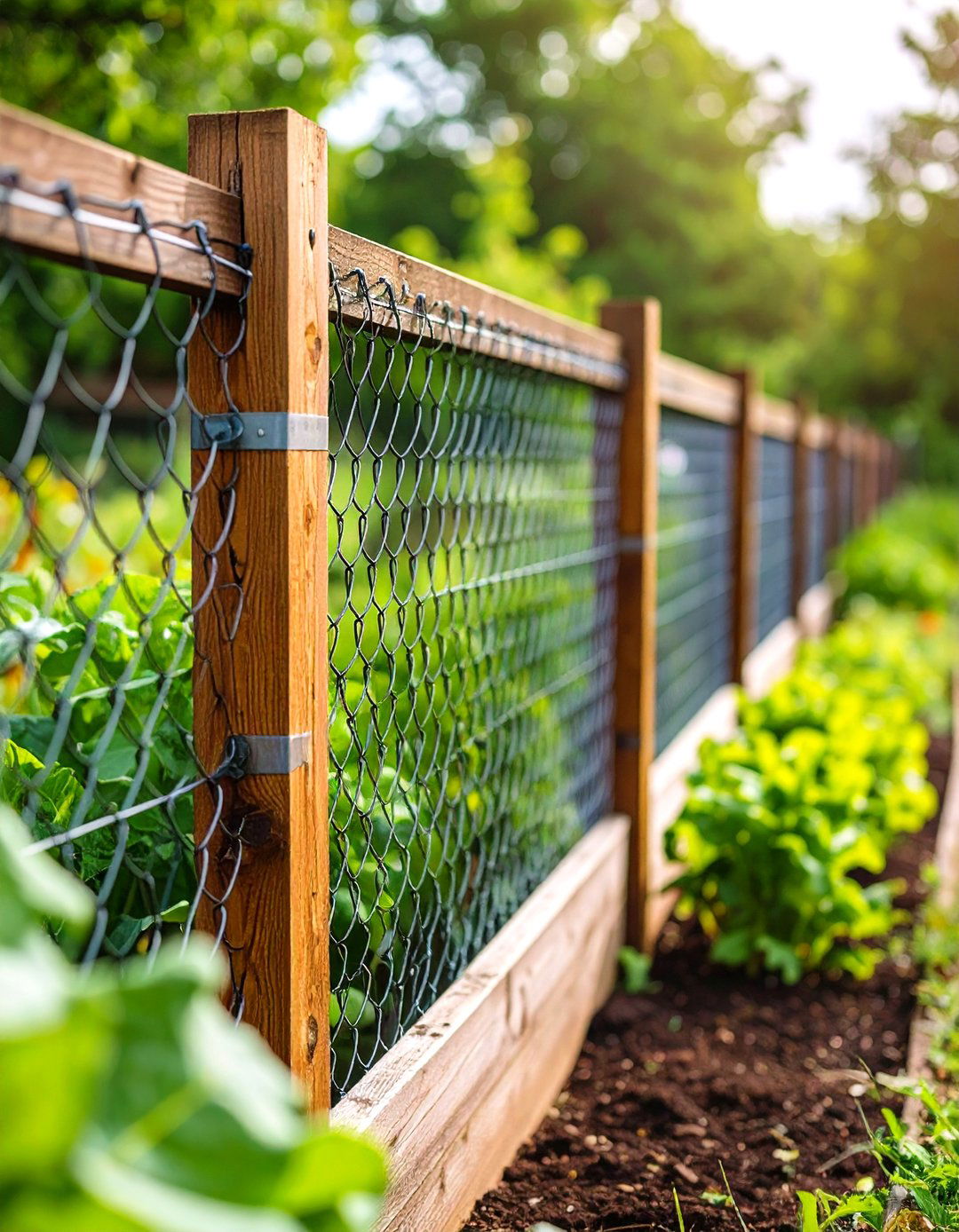
Metal mesh fencing—such as welded wire or hardware cloth—is ideal for enclosing raised vegetable beds. With mesh openings typically ½ inch or smaller, this fence effectively keeps out rodents, rabbits, and ground-dwelling pests while allowing good airflow and sunlight. Metal mesh panels attach to wooden or metal posts with staples, zip ties, or clips. Galvanized steel mesh resists rust and lasts longer in damp garden environments. For above-ground installations, burying the bottom several inches into soil—or bending it into an L-shaped apron—stops burrowing animals. Mesh fencing pairs well with decorative wooden frames or metal trellises, enabling dual use as a support for vining plants like peas and beans.
4. Gabion Wall Fence

Gabion walls—wire mesh cages filled with stones, bricks, or reclaimed concrete—offer a durable and architecturally striking fence option. Originally used in civil engineering, gabions create sturdy barriers that blend seamlessly with garden elements. They can be built modularly, stacking wire baskets to the desired height (often 3–5 feet for gardens) and filled with locally sourced stone for sustainability. Beyond boundary definition, gabion walls serve as raised planters, seating, or vertical garden backdrops. Proper installation requires level foundations, high-quality galvanized or PVC-coated mesh to prevent corrosion, and occasional settling adjustments. Once in place, gabions provide a low-maintenance, modern contrast to lush vegetable beds.
5. Living Hedge Fence
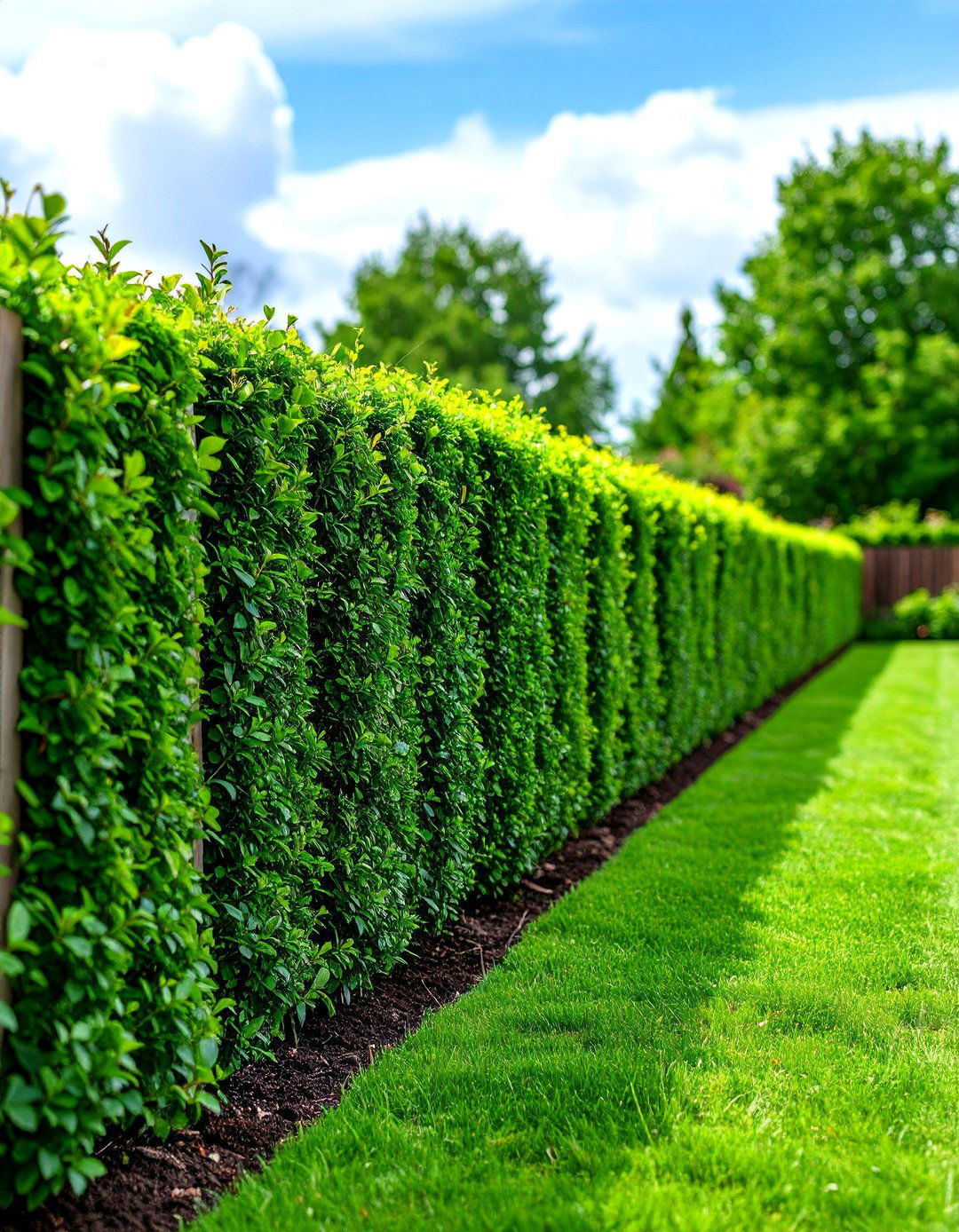
A living fence—or hedge—is formed by planting rows of densely spaced shrubs or small trees to create a green barrier. Suitable species include boxwood, hornbeam, and laurel, which tolerate pruning and form dense growth. To deter deer and rabbits, consider thorny or aromatic plants like barberry or holly. Plantings are typically set 1–2 feet apart in a straight line, with regular clipping to maintain shape and height around 4–6 feet. Hedgerows provide habitat for beneficial insects and birds, enhance soil health, and absorb noise and wind. While initial establishment takes a few seasons, living fences mature into sustainable, organic boundaries that enrich garden ecosystems.
6. Bamboo Fence

Bamboo fencing uses either live bamboo plants or pre-manufactured bamboo rolls and panels to create exotic-looking screens. Live bamboo species—such as Phyllostachys nigra—can form a dense, tall barrier within a few years, but require root barriers to prevent invasive spreading. Alternatively, bamboo rolls made of split canes bound together provide instant privacy and a natural aesthetic. Rolls attach to existing structures or posts with wire or zip ties. Bamboo fences resist rot and pests but may weather to silver-gray over time. They pair beautifully with tropical or Asian-influenced garden themes and help shield leafy greens from harsh afternoon sun.
7. Cattle Panel Fence
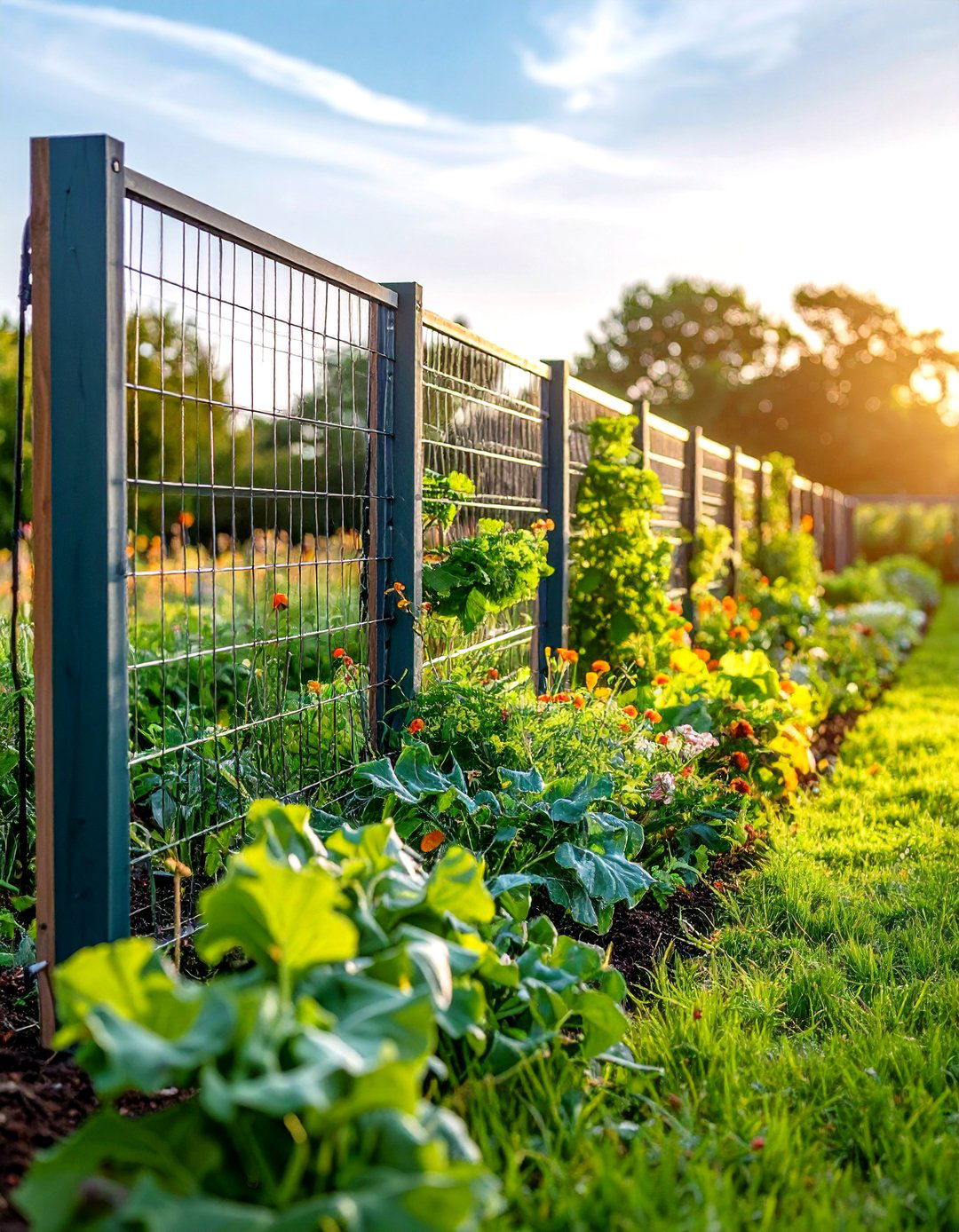
Cattle panels—heavy-gauge wire panels originally designed for livestock—make robust vegetable garden fences. Panels are typically 16 feet long and come in 16- or 17-gauge steel, with rectangular openings about 4 x 6 inches. Set panels between sturdy T-posts or wooden posts and secure them with U-bolts or wire clips. For small critter protection, attach hardware cloth to the lower sections. The upper openings serve as natural trellises for climbing vegetables like cucumbers and pole beans, maximizing vertical growing space. Cattle panel fences stand 4–5 feet tall, offering both protection and structural support, and can last decades with minimal maintenance.
8. Wattle Fence
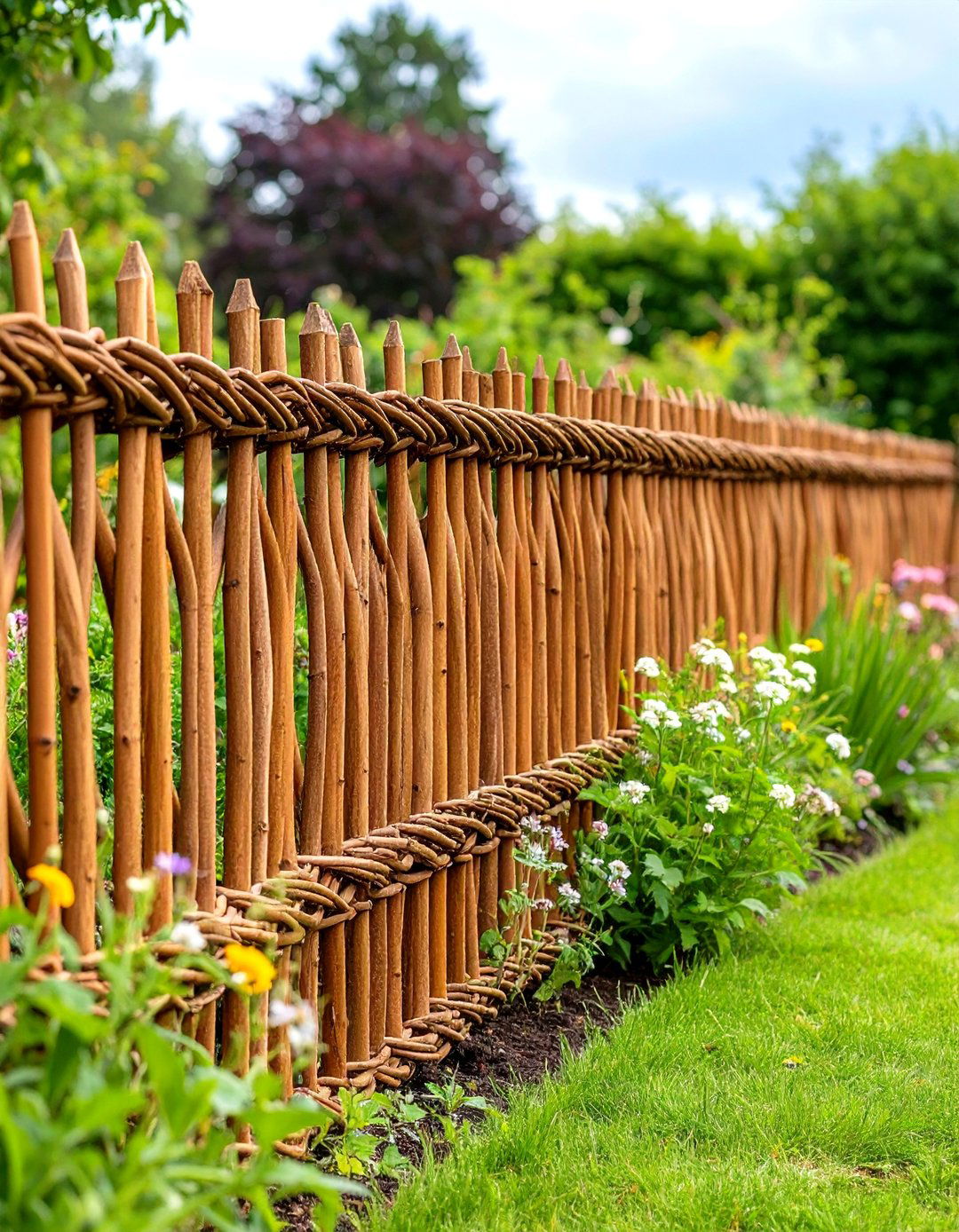
A wattle fence—also known as hurdle or woven stick fence—is made by weaving flexible branches (typically willow, hazel, or chestnut) between upright stakes. Traditional wattle provides a rustic, natural barrier about 3–4 feet high, perfect for cottage-style vegetable plots. Stakes are driven into the ground at intervals, and long, supple rods are interlaced horizontally, creating a tight weave that blocks rabbits and deer. Wattle fences biodegrade over several years, returning nutrients to the soil, but require periodic replacement of individual rods to maintain integrity. Lightweight and labor-intensive to build, wattle offers handcrafted charm and ecological sustainability.
9. Lattice Fence with Climbing Plants

Wooden lattice panels—cross-hatched strips forming square openings—deliver both decoration and function. Panels 3–4 feet tall attach to posts or lean against existing fences. The diamond- or square-pattern lattice supports climbing vegetables like peas, beans, and cucumbers. As plants twine through the openings, they fill the panels with foliage, creating a living screen. Lattice is available in cedar, redwood, or treated pine; painting or staining protects against moisture. This fence style balances openness with support, allowing sunlight and air circulation while clearly delineating garden beds.
10. Wire Mesh Raised Bed Fence
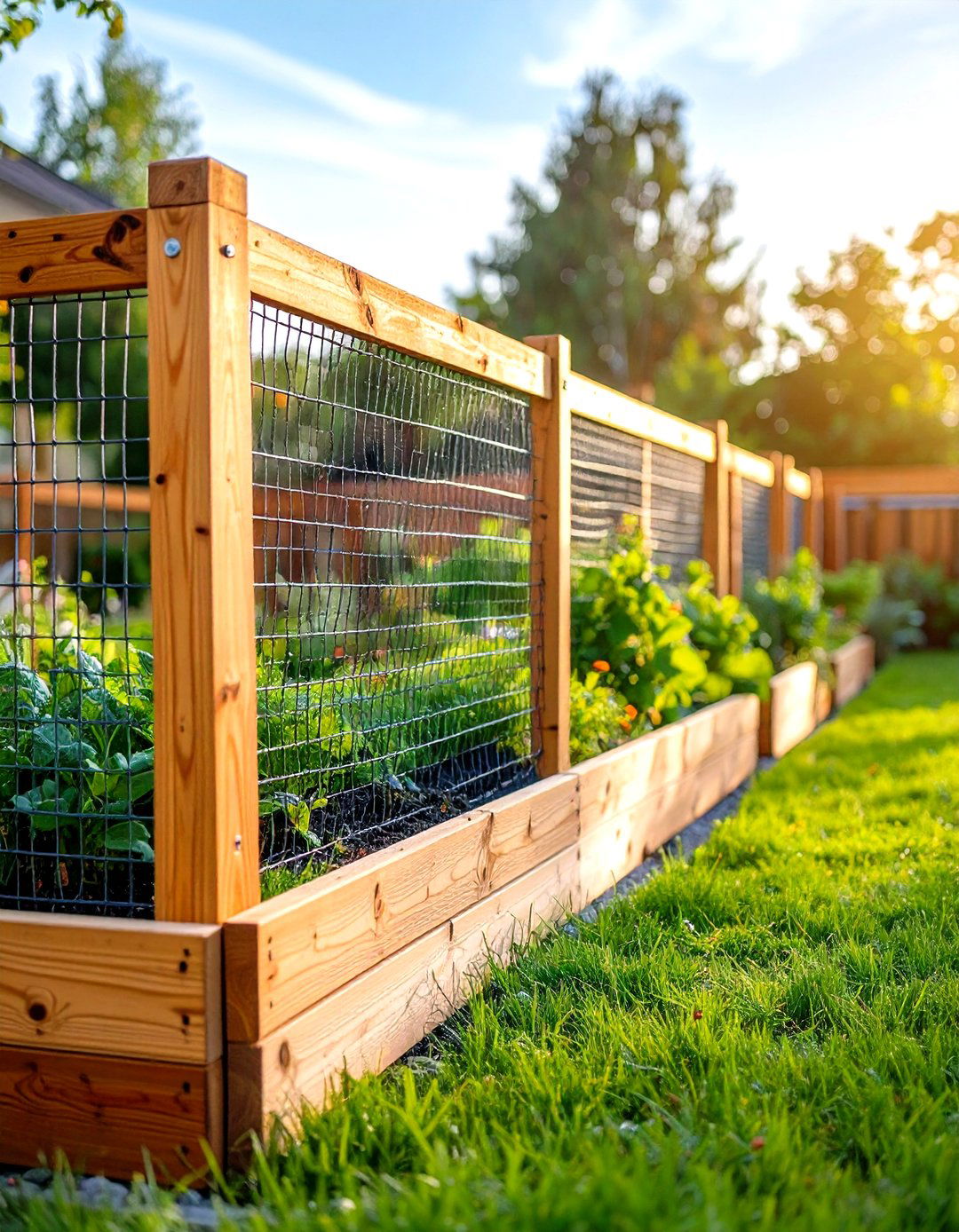
Combining raised beds with integrated fencing saves space and materials. Wire mesh panels—such as hardware cloth—are fastened to the outer bed frames, creating a protective barrier around each box. This design prevents digging pests like voles and rabbits while preserving airflow. Burying the mesh base into the ground adds protection against burrowers. The inside of the raised bed remains accessible for planting and harvesting, and the fence structure doubles as a trellis for vining crops. This modular system suits small urban plots, enabling efficient crop rotation and easy maintenance.
11. Wooden Post and Rail Fence

A post-and-rail fence uses horizontal rails—typically two to three—spanning between sturdy posts set in concrete. While primarily decorative, adding chicken wire or mesh between rails boosts pest control. This fence style evokes farmstead aesthetics and allows an open view of lush garden beds. Posts of 4×4 or 6×6 lumber provide stability, with rails of 2×6 or 2×8 boards. Rails can be notched into posts or attached with brackets. Applying weatherproof stain or sealant extends service life. Post-and-rail sections accommodate gates for easy tool and plant access.
12. Decorative Metal Panel Fence
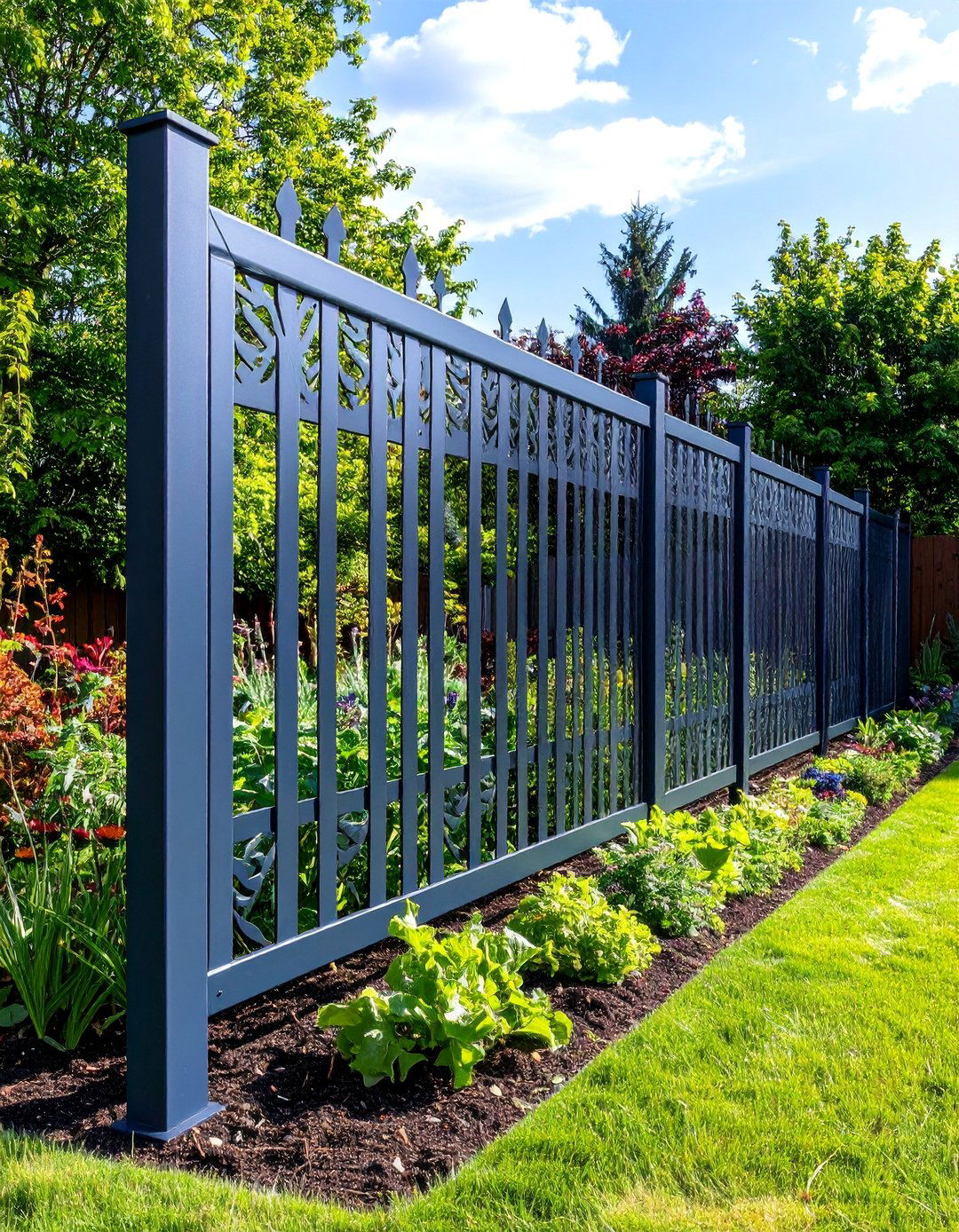
Decorative laser-cut metal panels—made from weather-resistant steel or aluminum—offer modern, artistic barriers. Panels feature intricate motifs such as leaves, vines, or geometric patterns. Mounted between posts, these panels stand 4–6 feet tall, combining privacy with visual interest. As vines or climbing vegetables grow up, they weave through the cutouts, softening the metal’s form. Powder-coated finishes prevent rust and ensure longevity. While higher in cost, metal panels require minimal upkeep and can be a striking focal point in contemporary or formal garden designs.
13. Vertical Garden Fence
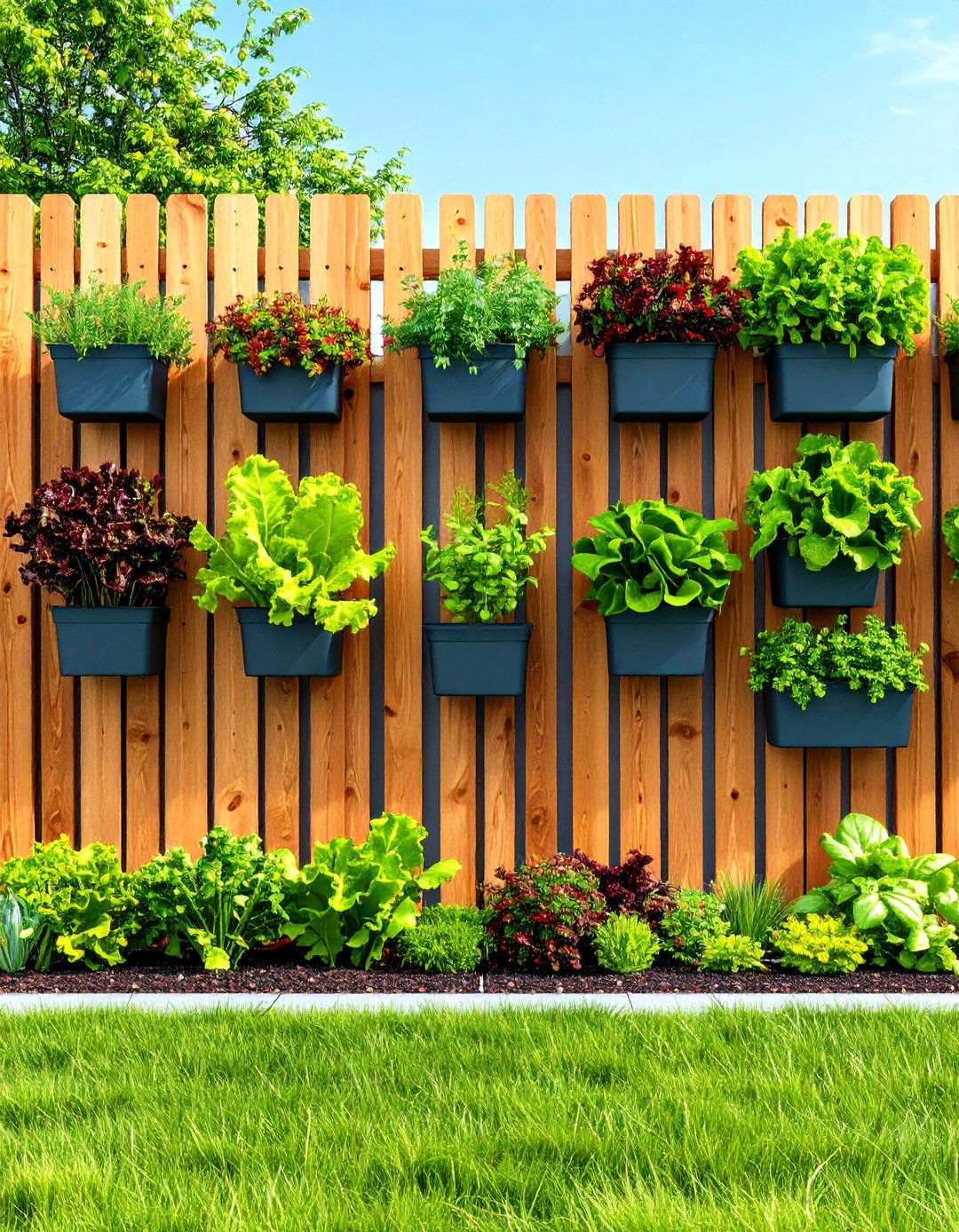
Transform a bare fence into a productive vertical vegetable garden by attaching planters, hooks, or gutter sections to panels. Small pockets or hung pots grow herbs, lettuce, and strawberries in easy-reach clusters. Self-watering planters and modular pocket systems boost efficiency, while strategically placed hooks hold hanging baskets. This living fence maximizes space, ideal for narrow yards or balconies. Regular irrigation and planting rotation maintain soil health. Besides functionality, vertical gardens create lush green walls that infuse edible beauty into outdoor living areas.
14. Chicken Wire and T-Posts Fence
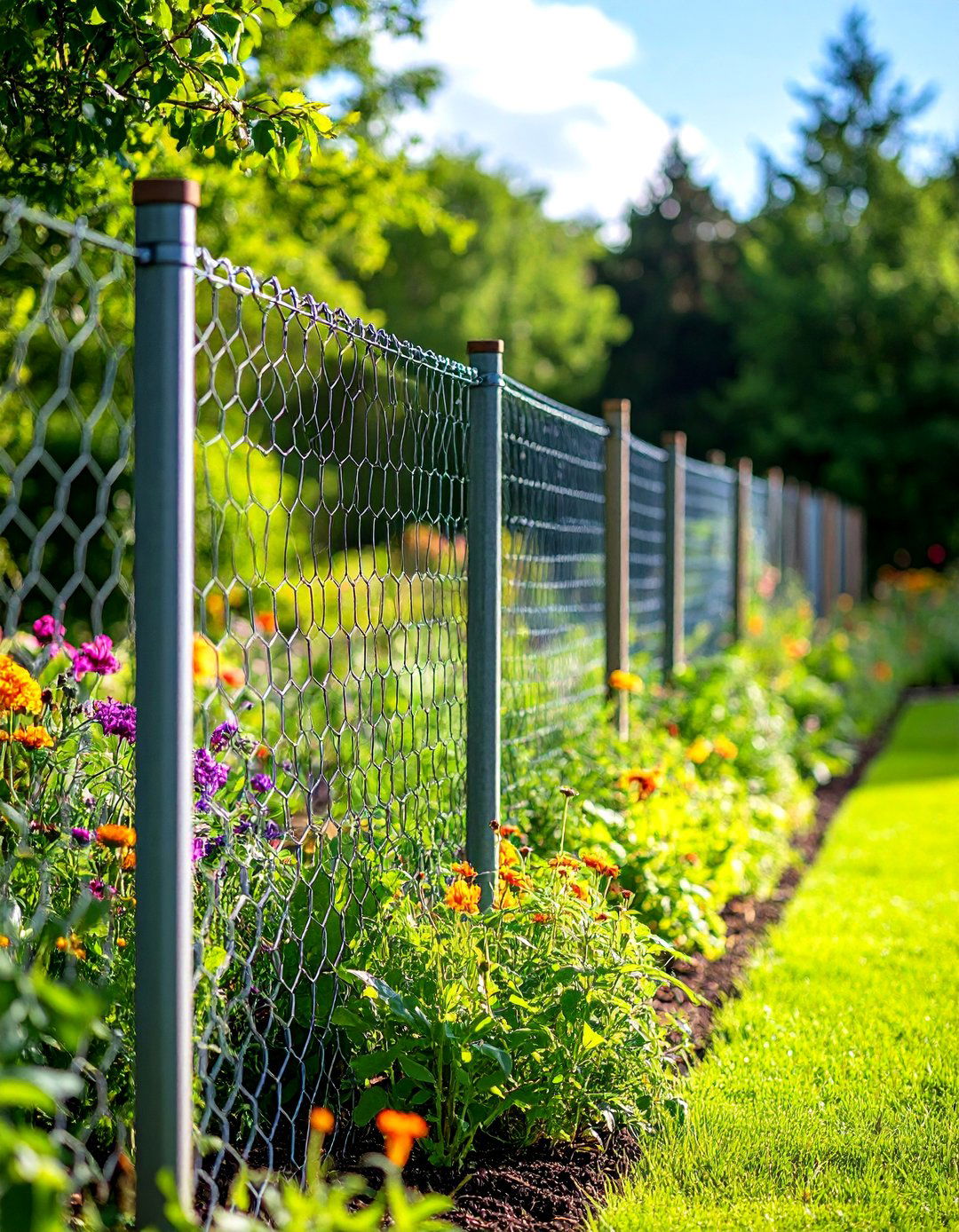
For quick, lightweight fencing, staple chicken wire to T-posts driven into the ground every 6–8 feet. The mesh (with 1-inch hexagonal openings) blocks small critters and birds. Adding a top strand of polywire or electric fence tape deters raccoons and deer. Posts require minimal setup—hammered with a driver—making this approach ideal for seasonal or temporary gardens. Chicken wire fences are inexpensive but less durable than welded wire; replacing damaged sections each season keeps the barrier effective.
15. PVC Teepee and Netting
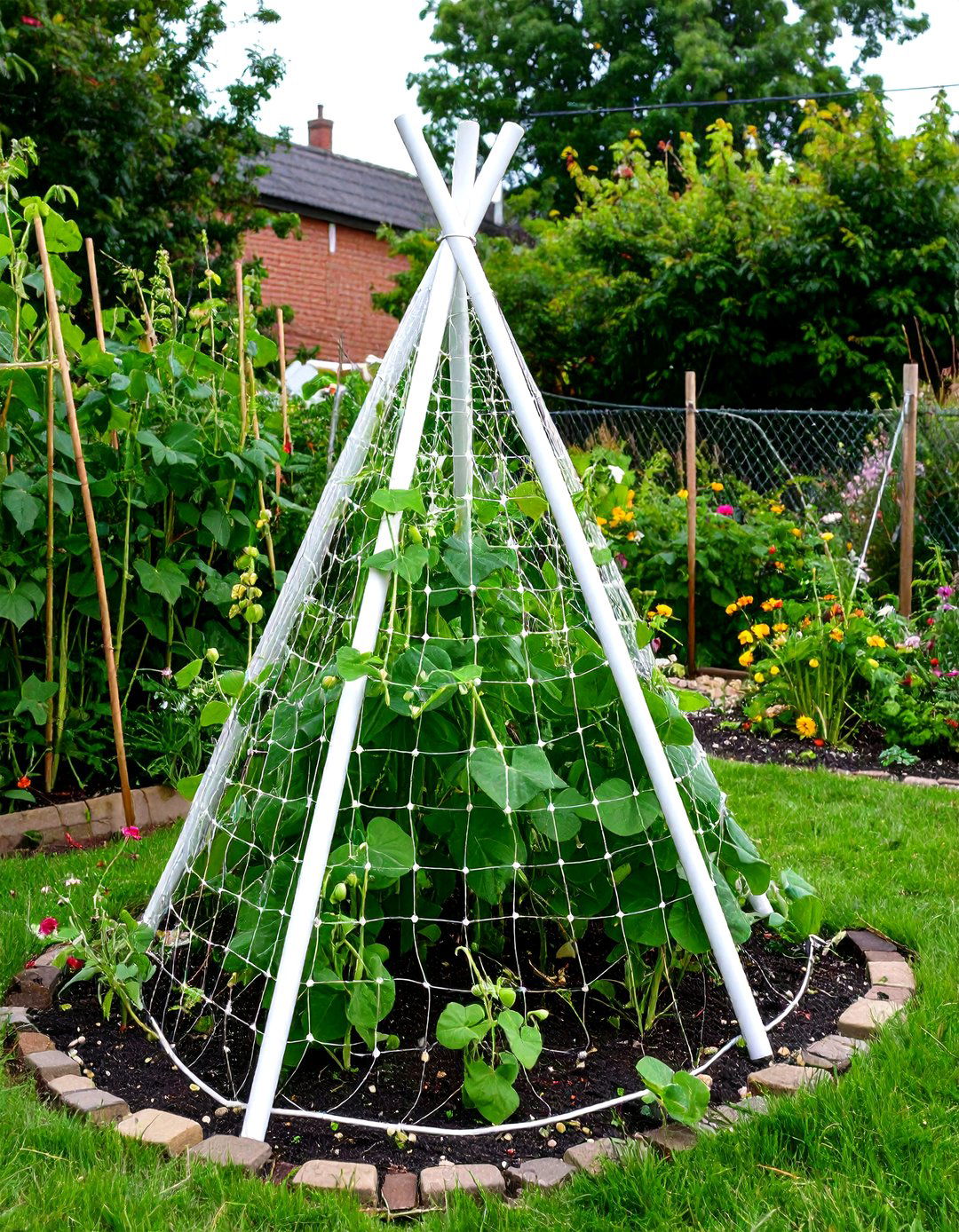
Construct a teepee frame using lengths of PVC pipe tied at the top and spread at the base, creating a conical support for climbing peas or beans. Encase the structure in fine insect mesh or netting to protect against aphids, beetles, and fluttering pests. The mesh attaches around the frame, with zip ties or clips. This compact enclosure allows easy access via a zippered flap. PVC-and-netting systems are lightweight, reusable, and ideal for small gardens, offering both support and pest control in one structure.
16. Upcycled Found Materials Fence

Transform discarded items—old doors, shutters, tin sheets, garden tools—into a quirky fence that reflects personal style. Secured between fence posts or mounted on an existing frame, these materials create an eclectic barrier. Old toolbox drawers might hold potted herbs; tin panels provide reflective surfaces that deter birds; shutter slats form adjustable shade screens. This repurposed fence is highly customizable and sustainable, reducing waste. While assembly can be labor-intensive, the result is a one-of-a-kind garden boundary that tells a story.
17. Stone and Iron Combo Fence

Combine stone walls or pillars with wrought-iron panels for a classic, durable vegetable garden boundary. Low stone walls (2–3 feet) topped with decorative iron fencing (another 2–3 feet) offer height for critter control and airflow. Stone veneers or stacked natural stone provide rustic charm, while iron pickets bring vertical emphasis. Mortared stone ensures stability, and powder-coated iron resists rust. Gate designs can mirror fence motifs, creating a cohesive entrance. This hybrid fence requires professional installation but delivers long-term performance and high aesthetic value.
18. Upcycled Window Frame Fence
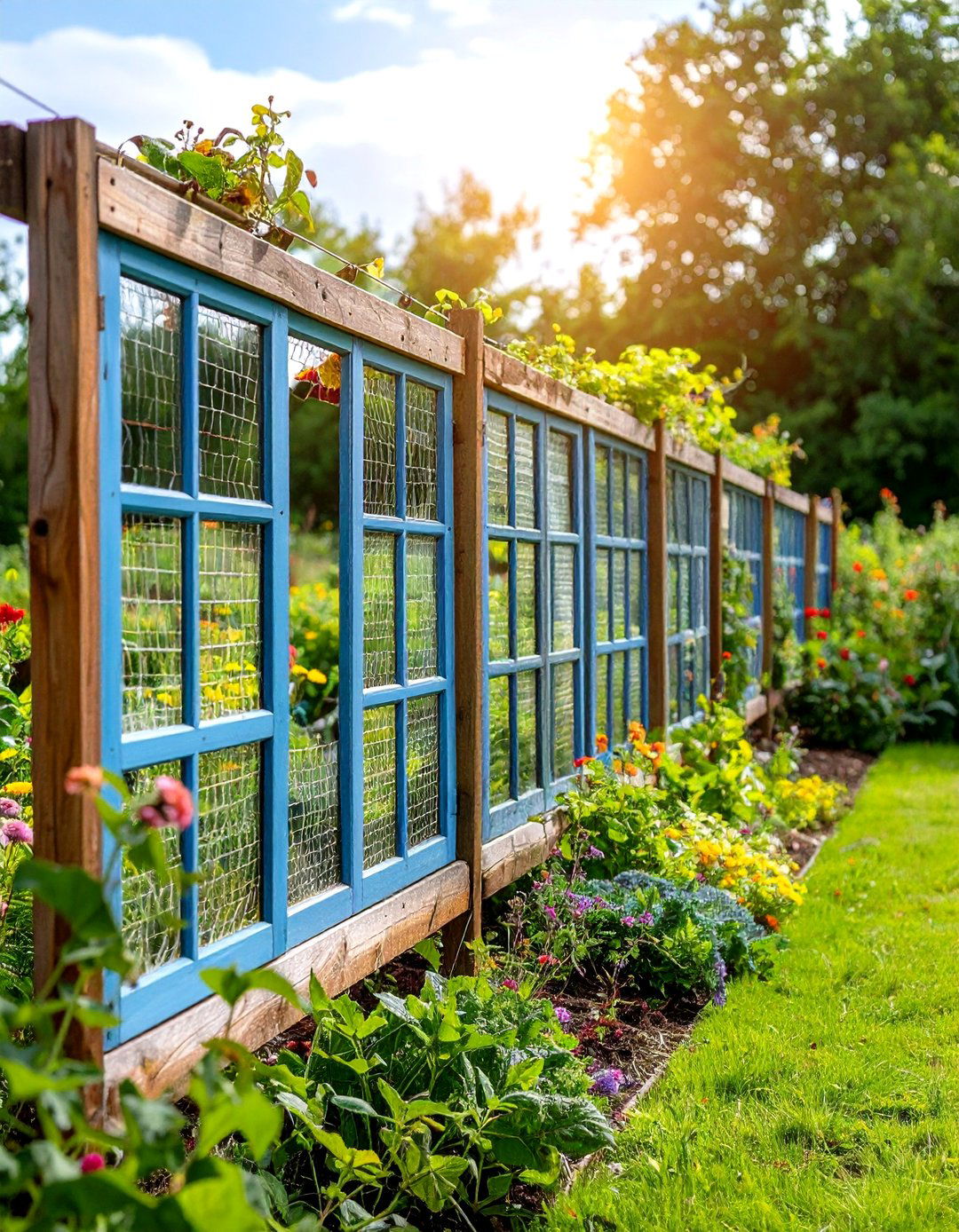
Hanging salvaged window frames along a fence adds architectural interest and functions as a trellis. Remove glass panes and replace them with chicken wire, mirrors, or pot hooks for plants. Pre-painted or naturally weathered frames attach to existing fences with screws or brackets. As vegetables and vines grow through the frames, they create dynamic living art. This budget-friendly option recycles materials and personalizes your garden boundary. Ensure frames are secured adequately to withstand wind and plant weight.
19. DIY Trellis Fence
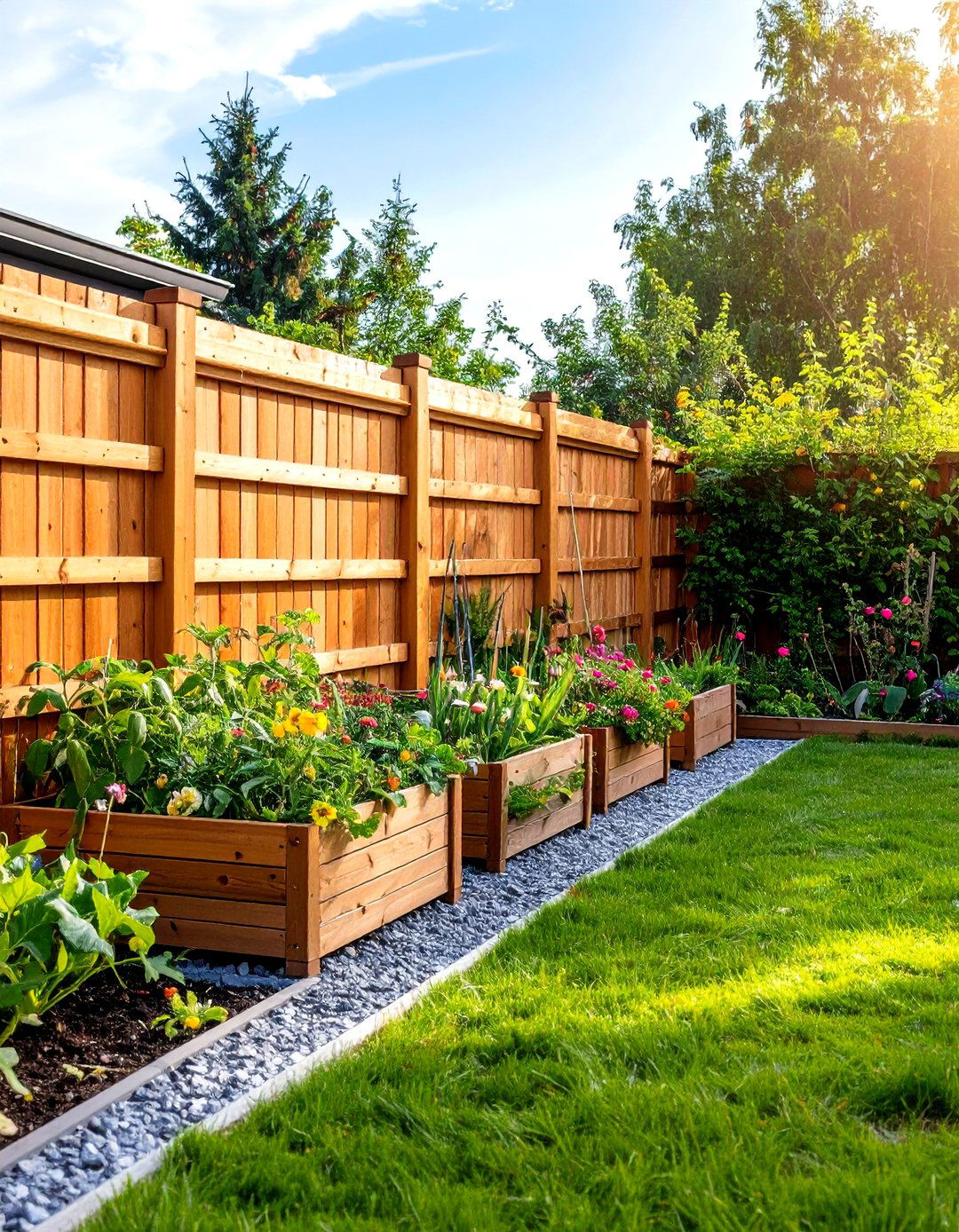
Install a series of wooden trellis panels—simple frames with cross-slats—between posts to support climbing vegetables like tomatoes, cucumbers, and beans. Trellis fences stand 5–6 feet tall, maximizing vertical yield. Use treated lumber or rot-resistant species for durability. Panels can be removable for seasonal flexibility. The lattice design provides partial screening and decorative appeal, especially when overlain with flowering vines. Building trellis fences requires straightforward carpentry skills and basic hardware, making it an accessible DIY weekend project.
20. Reed and Bamboo Roll Fence
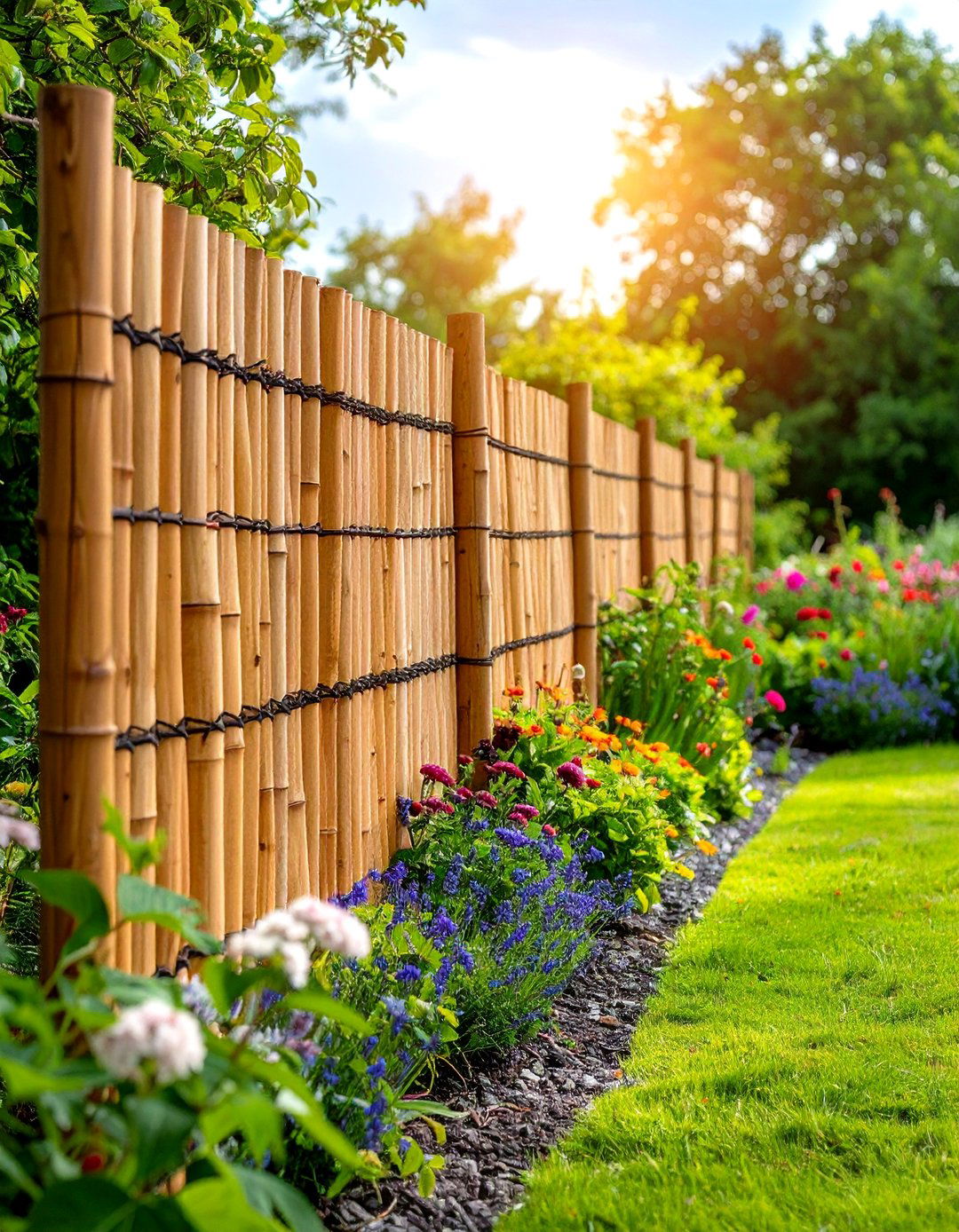
Reed or bamboo roll fencing offers a lightweight, natural screen that’s quick to install. Rolls attach to posts or existing fences with stainless-steel wire or zip ties. Available in various heights (4–6 feet), reed fences filter views, reduce wind, and provide an organic backdrop to garden beds. Although susceptible to moisture wear, applying a UV-resistant sealant extends life. This type of fencing is ideal for informal, tropical, or Zen-inspired vegetable gardens, blending seamlessly with greenery.
Conclusion:
From traditional wooden pickets to innovative upcycled and living barriers, these 20 vegetable garden fence ideas combine protection, style, and sustainability. Whether you prefer DIY pallet projects, sturdy metal mesh, or natural hedges, there’s a fence to suit every budget, climate, and garden aesthetic—each enhancing both security and visual appeal for your home-grown produce.


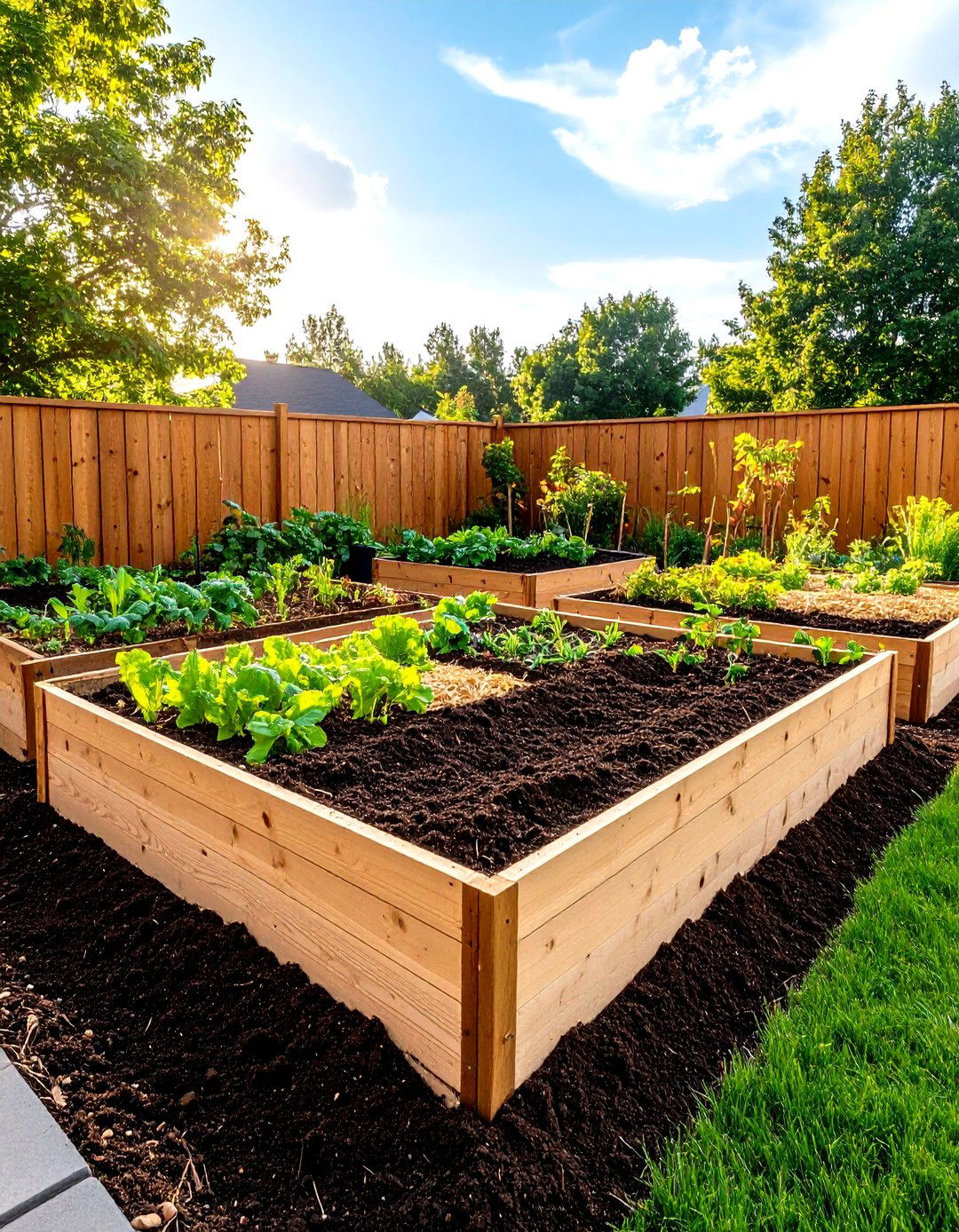


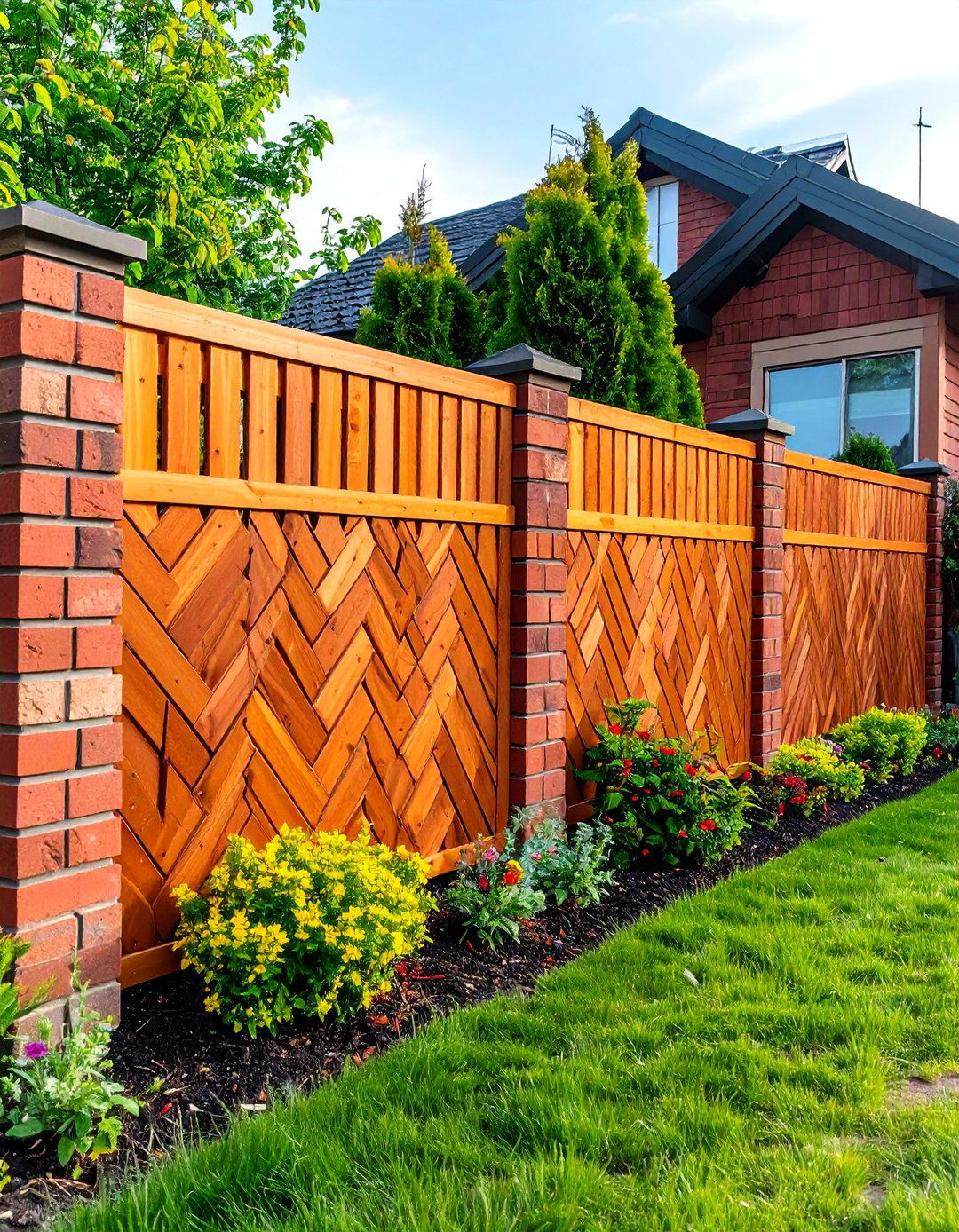
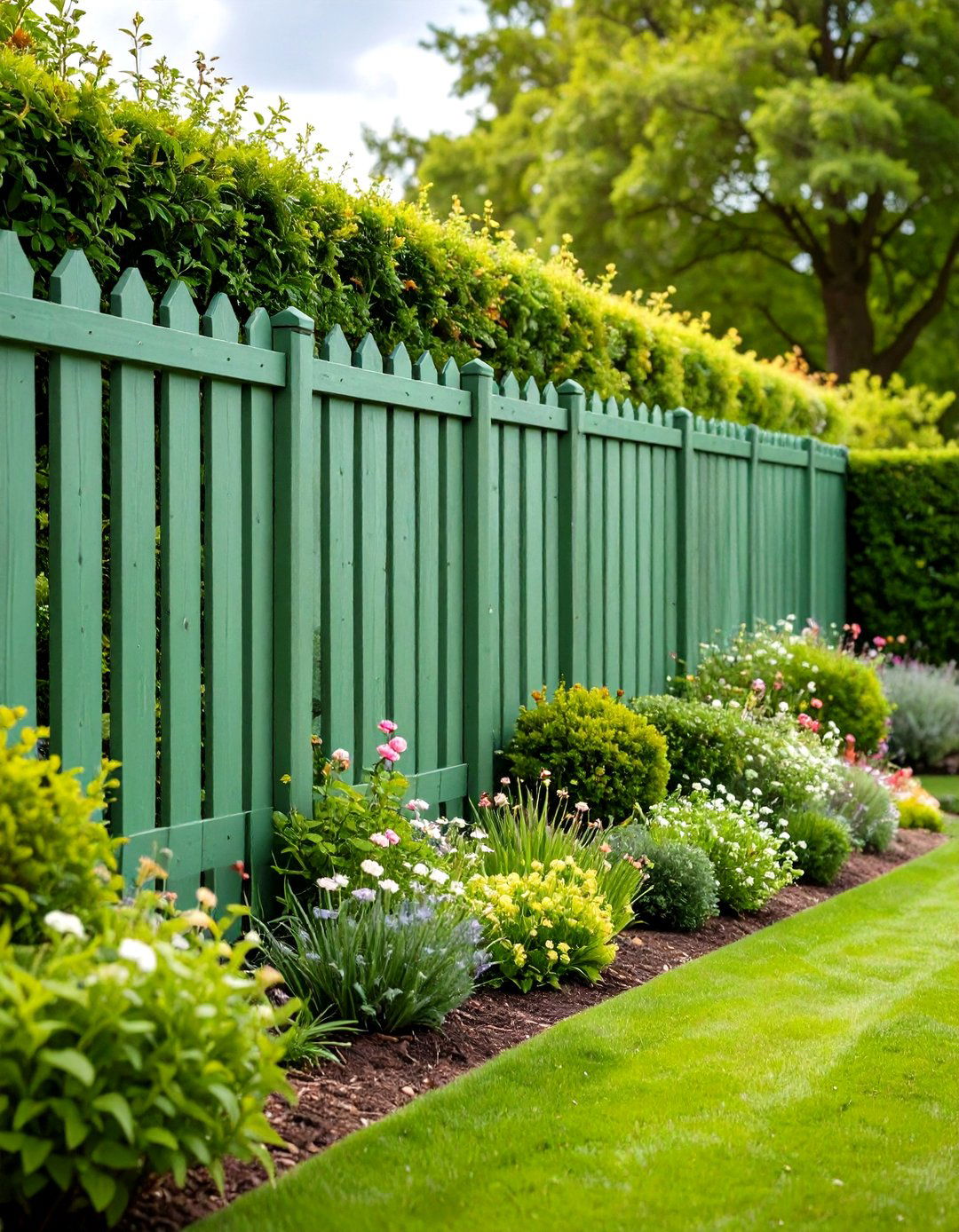
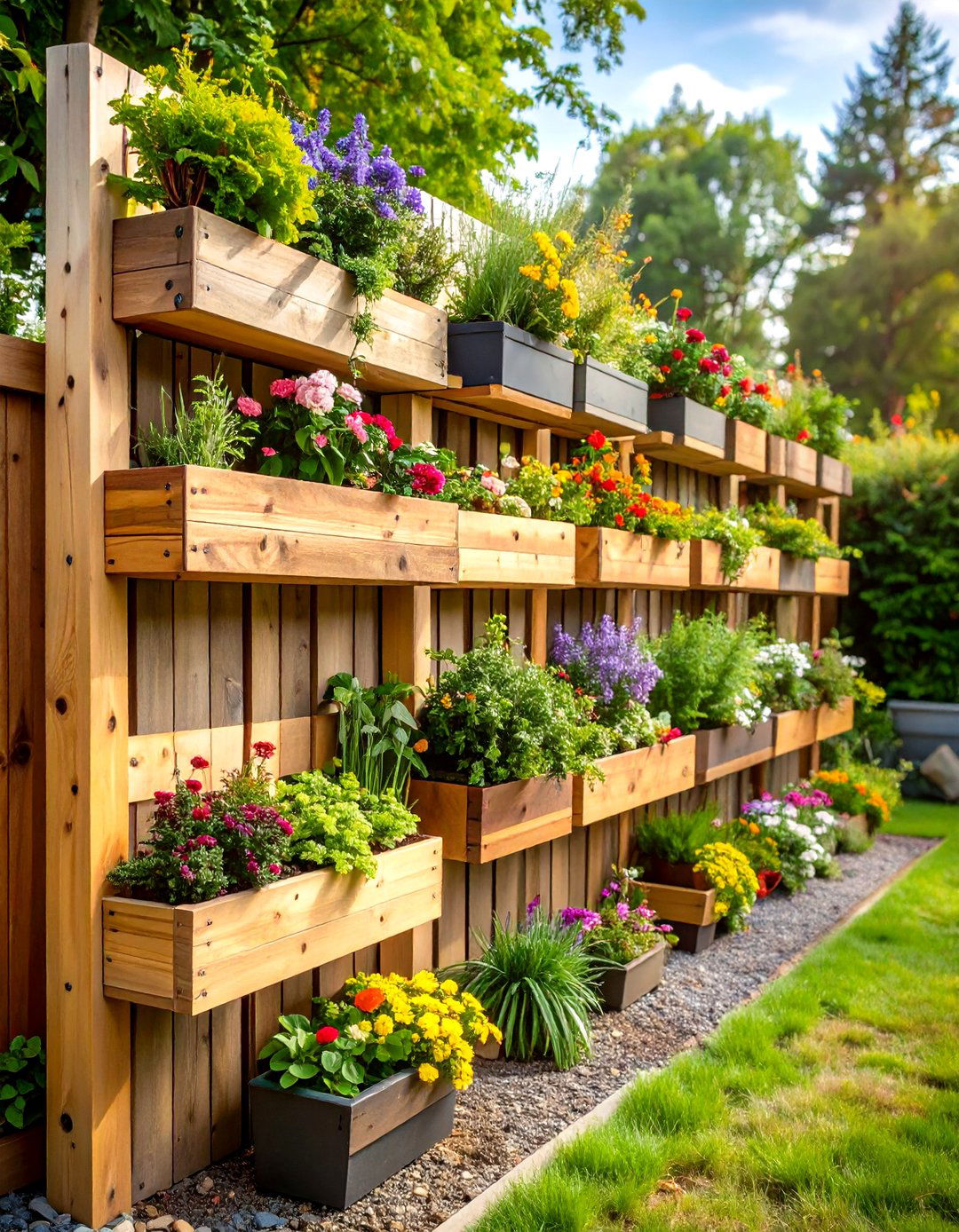

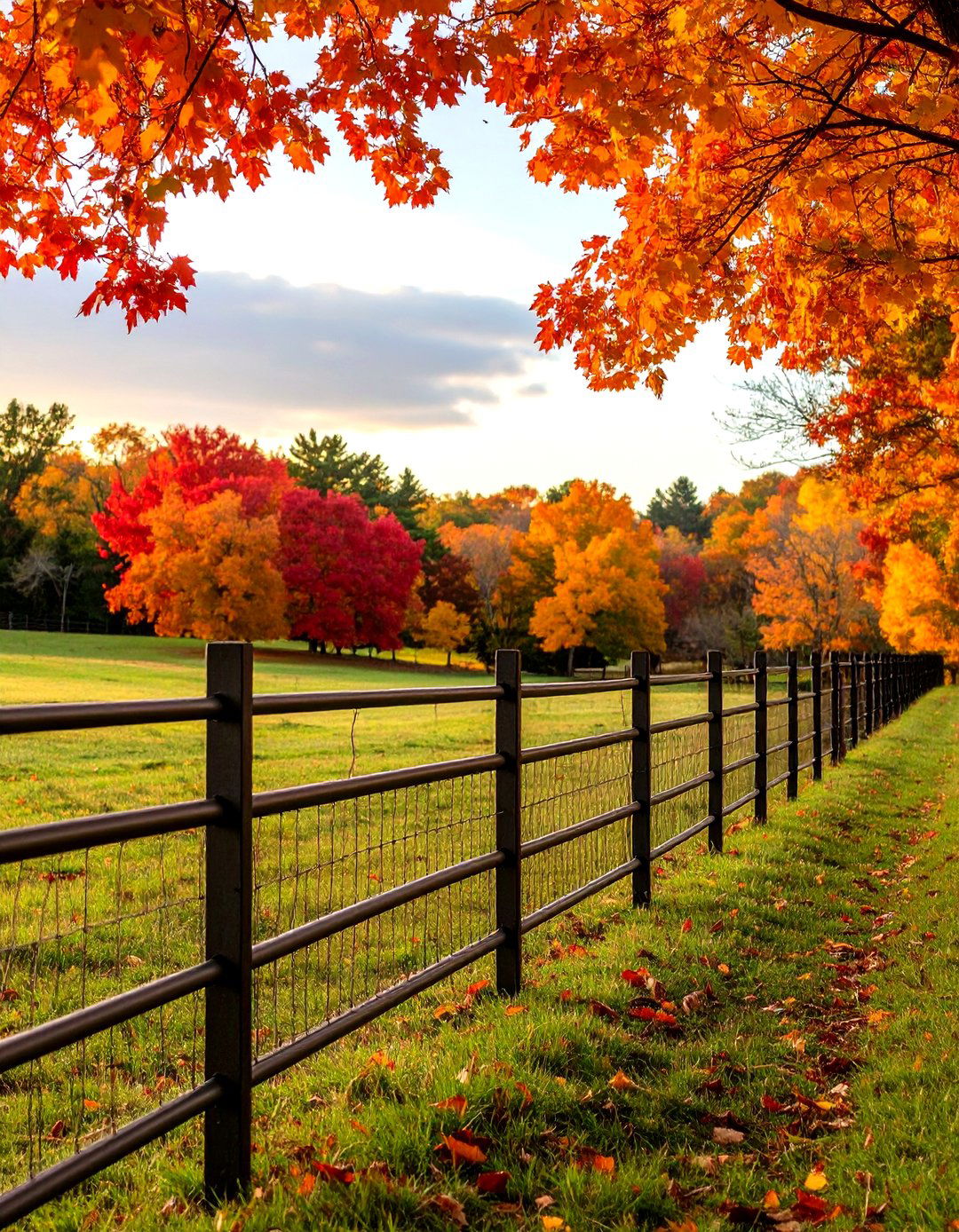
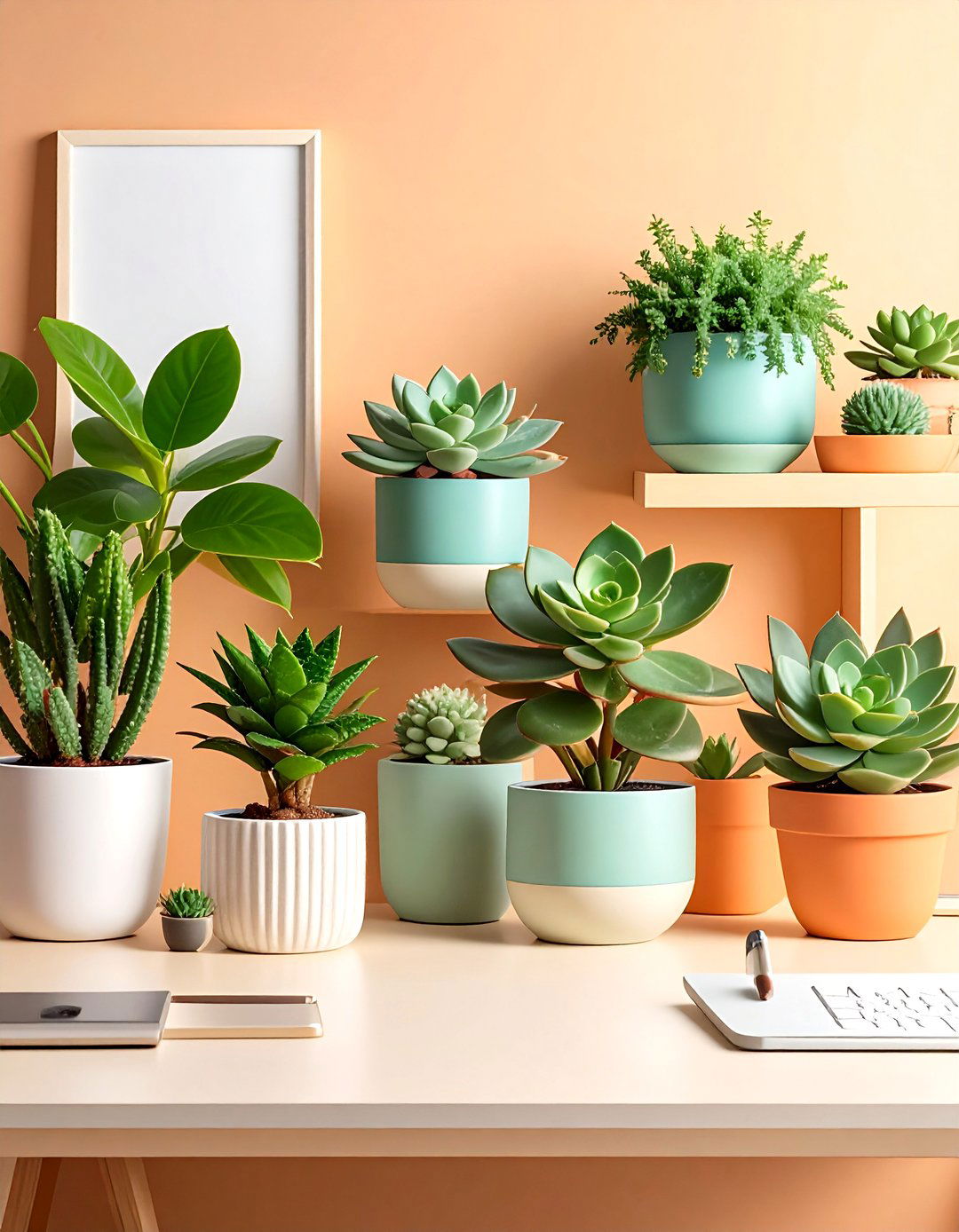

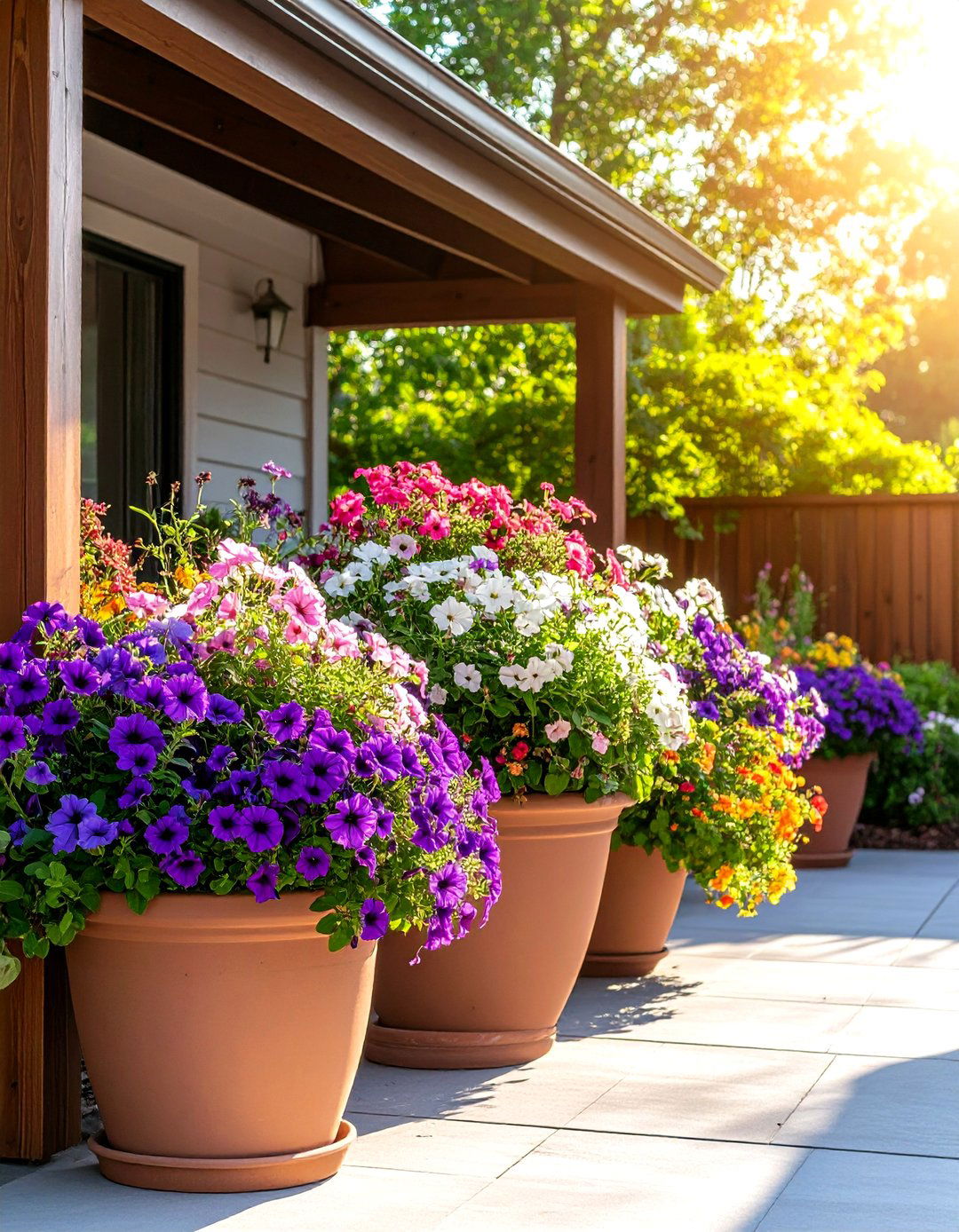
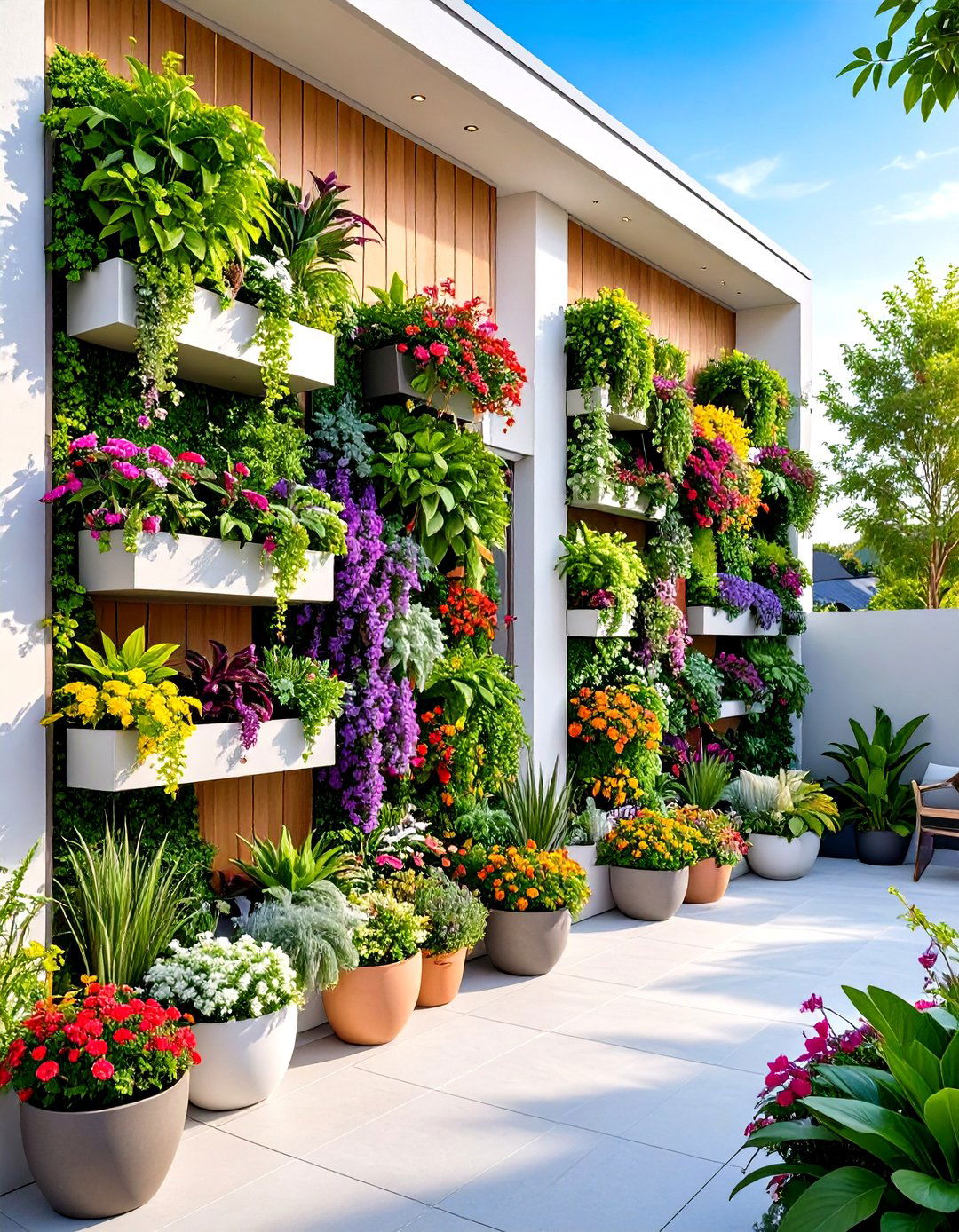

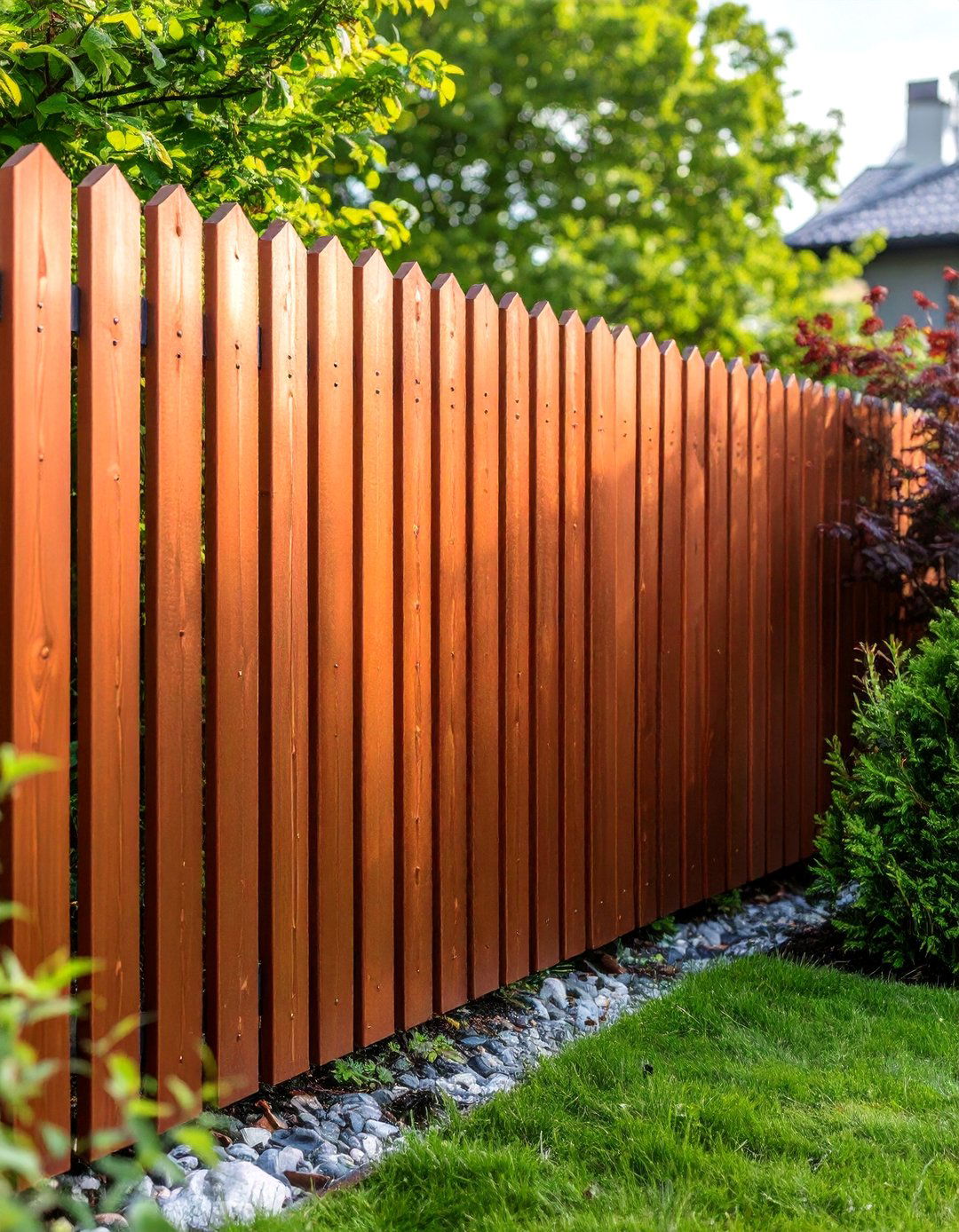
Leave a Reply